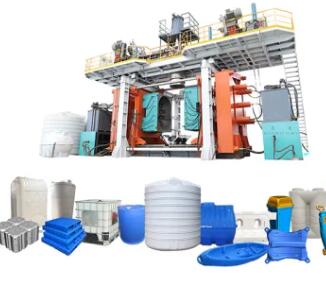Molding the Future: Unveiling the Distinctions in Injection Molding for Thermoplastics and Thermosetting Plastics
2024-01-30
Introduction:
Injection molding stands as a cornerstone in the world of plastics manufacturing, offering a versatile and efficient method for creating a myriad of plastic products. However, the injection molding process is not a one-size-fits-all technique. It undergoes significant variations depending on the type of plastic being used. This blog explores the key differences in the injection molding process for thermoplastics and thermosetting plastics, shedding light on the distinct characteristics that define these two prominent categories.
Understanding the Basics:
1. Thermoplastics:
- Definition: Thermoplastics are polymers that can be melted and re-molded multiple times without undergoing significant chemical changes.
- Key Feature: They become pliable when heated and solidify upon cooling.
2. Thermosetting Plastics:
- Definition: Thermosetting plastics are polymers that undergo irreversible chemical changes during the molding process, resulting in a rigid, infusible structure.
- Key Feature: Once molded and set, they cannot be re-melted or re-molded.
The Injection Molding Process:
For Thermoplastics:
1. Melting and Injection:
- Melting Point: Thermoplastics have a specific melting point, and they become molten when exposed to elevated temperatures.
- Injection: The molten thermoplastic is injected into the mold cavity under high pressure.
2. Cooling and Solidification:
- Solidification: Once injected, the material rapidly cools and solidifies, taking the shape of the mold cavity.
- Demolding: The newly formed part is ejected from the mold.
3. Reusability:
- Re-Molding Capability: Thermoplastics can be re-melted and re-molded, making them recyclable and suitable for iterative manufacturing processes.
For Thermosetting Plastics:
1. Molding and Crosslinking:
- Crosslinking: The molding process involves the initial shaping of the material, followed by a chemical reaction called crosslinking.
- Irreversible Change: Crosslinking results in an irreversible change, causing the material to harden and become rigid.
2. Curing and Finalization:
- Curing Stage: The thermosetting plastic goes through a curing stage, during which it solidifies and attains its final form.
- Unchangeable Structure: Once cured, the structure is fixed, and the material cannot be re-molded.
3. Heat Resistance and Durability:
- Heat Resistance: Thermosetting plastics are known for their heat resistance, making them suitable for applications where exposure to high temperatures is common.
- Durability: Their irreversible structure contributes to enhanced durability and resistance to wear and tear.
Tooling Considerations:
1. Mold Material:
- Thermoplastics: Mold materials for thermoplastics need to withstand the repeated heating and cooling cycles.
- Thermosetting Plastics: Mold materials must be durable and capable of handling the chemical reactions associated with the curing process.
2. Cycle Time:
- Thermoplastics: Typically have shorter cycle times due to the rapid cooling and solidification process.
- Thermosetting Plastics: Longer cycle times are required for crosslinking and curing.
Conclusion:
In conclusion, while the injection molding process serves as the backbone of plastic manufacturing, the distinction between thermoplastics and thermosetting plastics dictates how this process unfolds. Thermoplastics offer versatility through re-molding capabilities, making them suitable for diverse applications. On the other hand, thermosetting plastics provide durability and heat resistance due to their irreversible chemical changes during molding. Understanding these differences is crucial for manufacturers seeking to optimize their production processes and deliver products tailored to the unique properties of each plastic category. As innovation continues to drive advancements in materials science, the world of injection molding stands poised for further evolution, offering solutions that align with the demands of an ever-changing market.



